Israeli modified Saiga rifles in Nigerian military service
A Kalashnikov story by @thedixiemauser
Introduction
In the early 2020s, the Nigerian Armed Forces (NAF) use a wide variety of assault rifles. These range from various AK pattern rifles & old FN FALs, to modern space-age looking Tavor TAR Integral 5.56x45mm bullpup assault rifles. Often when firearms enthusiasts ponder about the unique weapons used by the Nigerian Armed Forces, they immediately think about the use of Polish made Beryl M762 assault rifle. The Beryl M762 is fairly unique, but little do they know that there are far more unique and interesting Kalashnikovs in Nigeria.
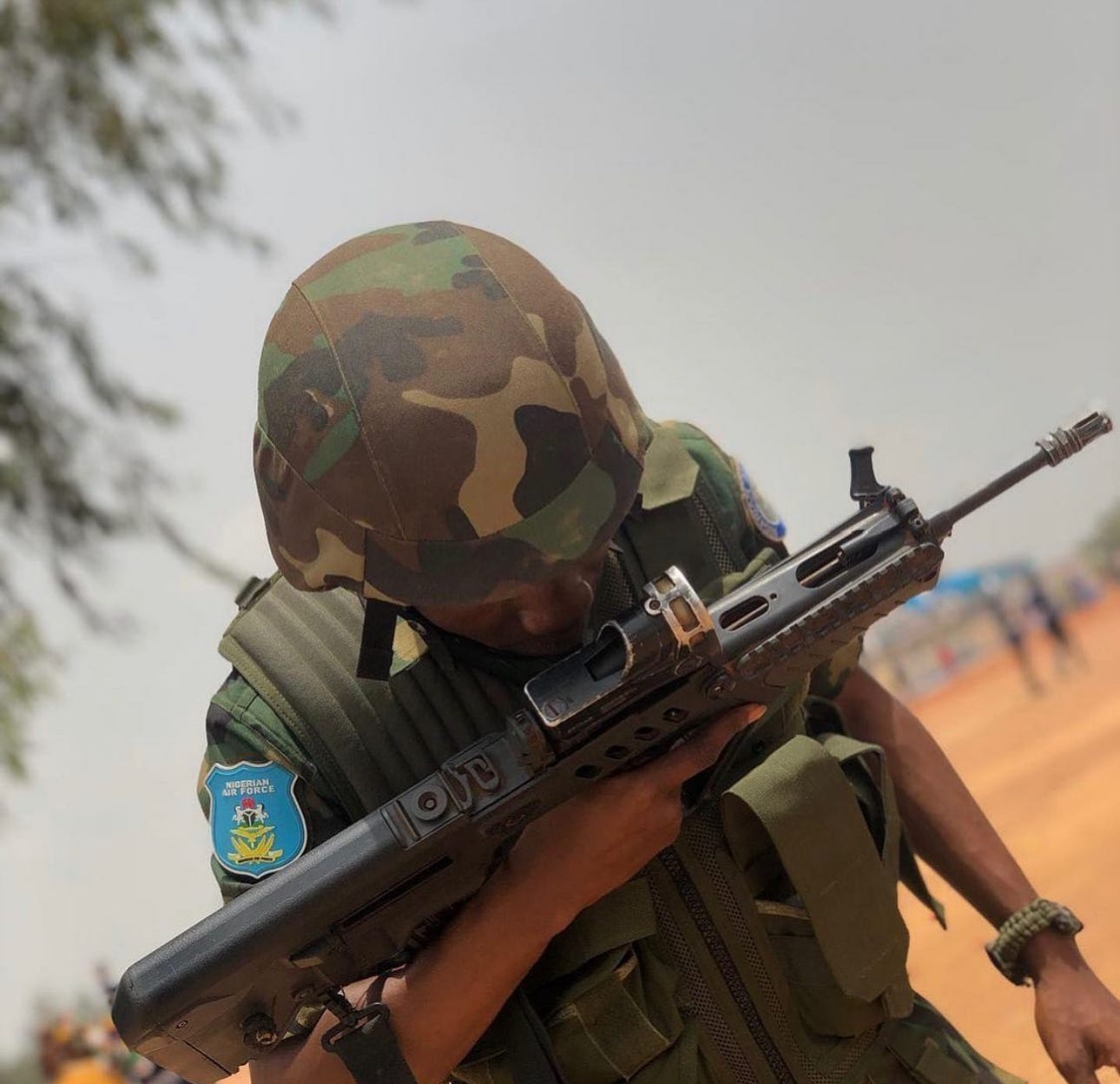

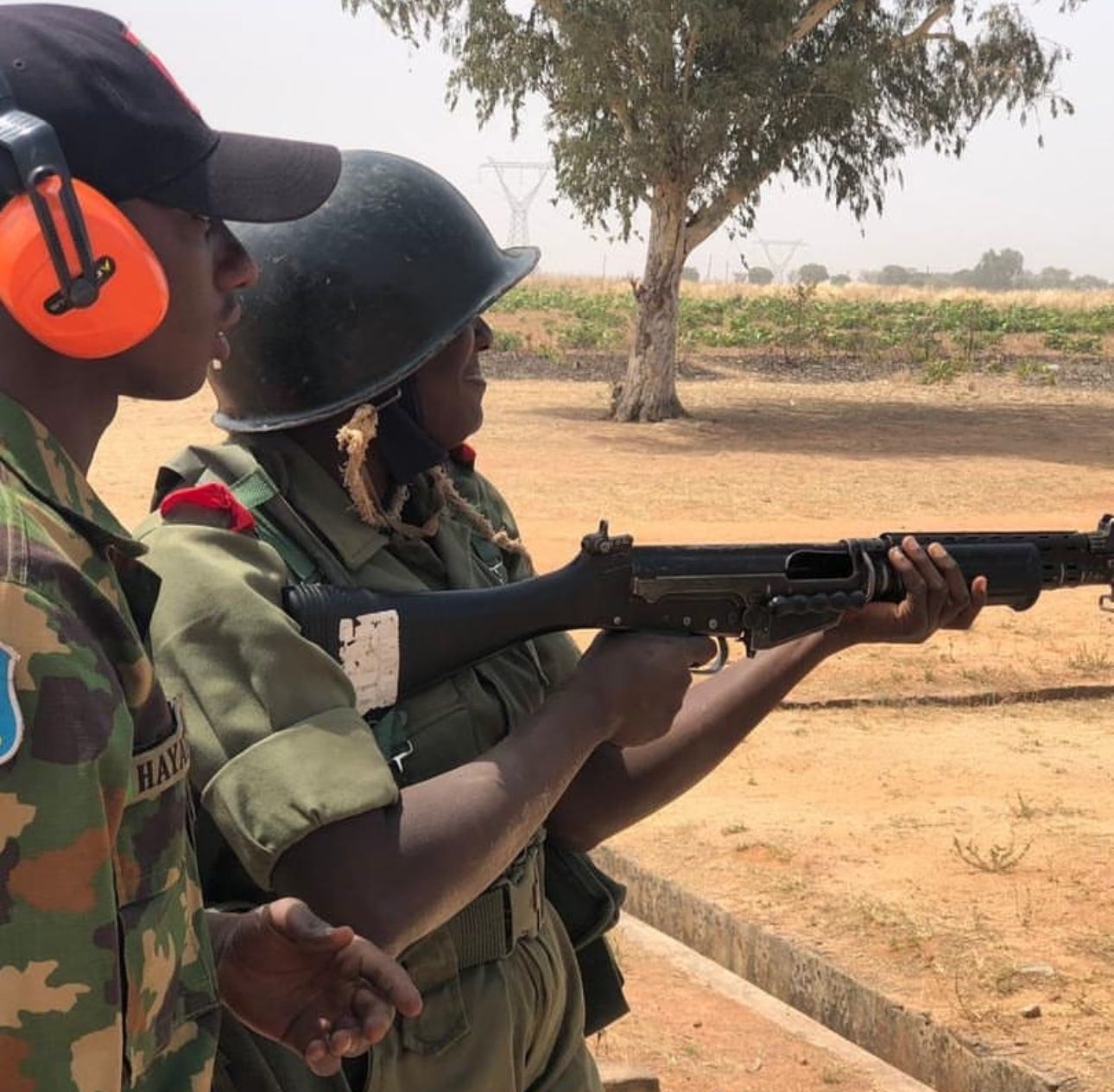
The mysterious 7.62mm AK74 style “C-AK-103” rifle
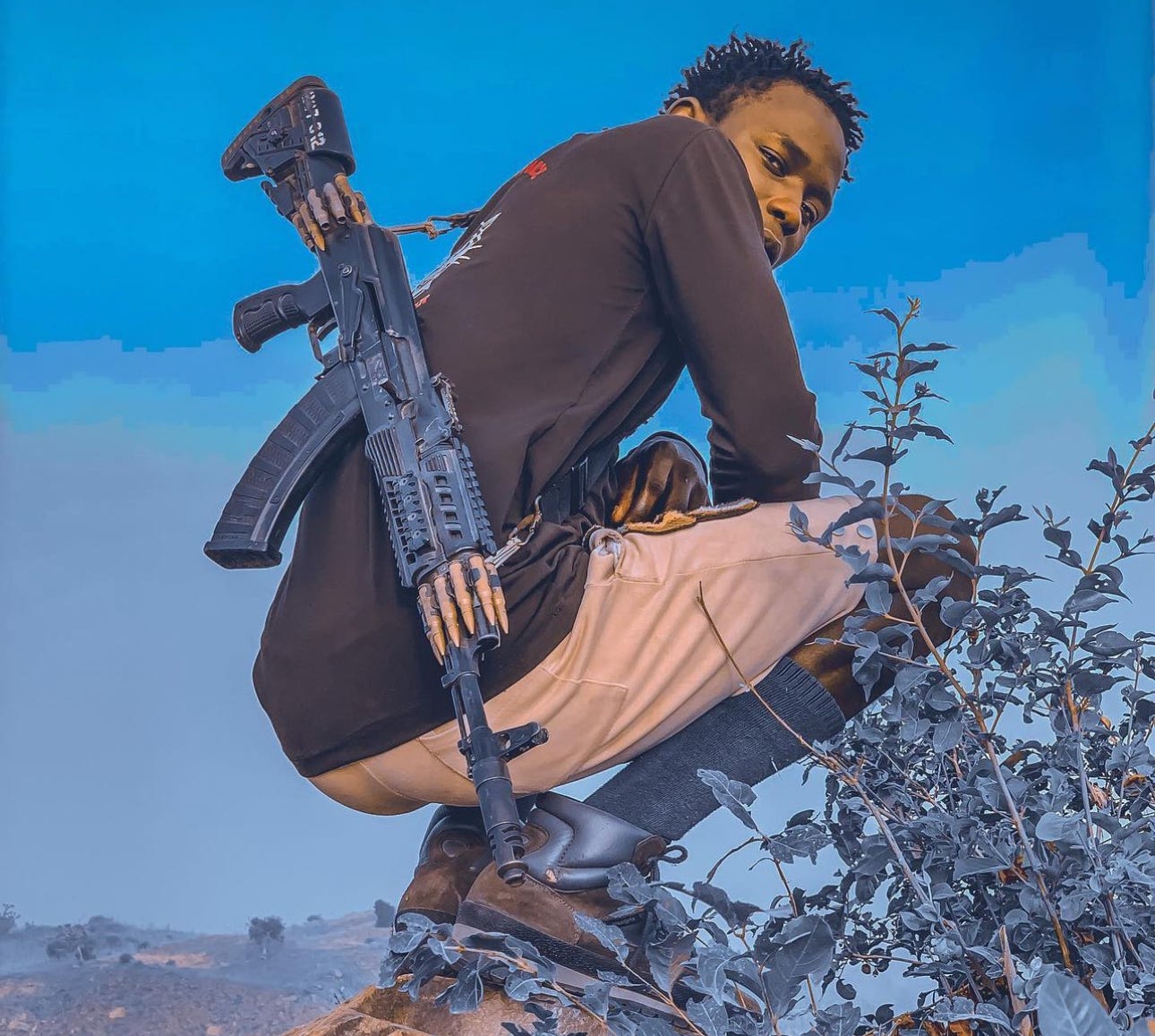
Starting in the early 2020s, many photos began appearing on social media sites such as Facebook & Instagram of Nigerian soldiers pictured with weird 7.62x39mm chambered AK74 style assault rifles. These rifles feature modern polymer furniture, a stamped AK74 style receiver, an AK-100 series bolt cam initiating rivet, odd markings, odd muzzle brakes, smooth top covers, & sometimes no or “neutered” accessory lugs that lack the “wings”.

These rather odd Kalashnikov pattern assault rifles are marked “C-AK-103” on the right side of the receiver. They appear to have had some manufacturer & or importer markings removed, judging by the sections of the receiver that have recessed portions where material was milled away.

These mystery “C-AK-103” rifles not only appear to have Russian proof marks & Izhmash logos, but some also have two extra pins located at the back of the receiver. Since these AK pattern rifles have a conventional three pin fire control group, these two extra pins (or plugs/rivets) are likely fillers intended to close four holes (two on either side of the receiver) that are no longer used. There is also empty rectangular holes cut into the bottom right side of the receiver on at least some C-AK-103 rifles.
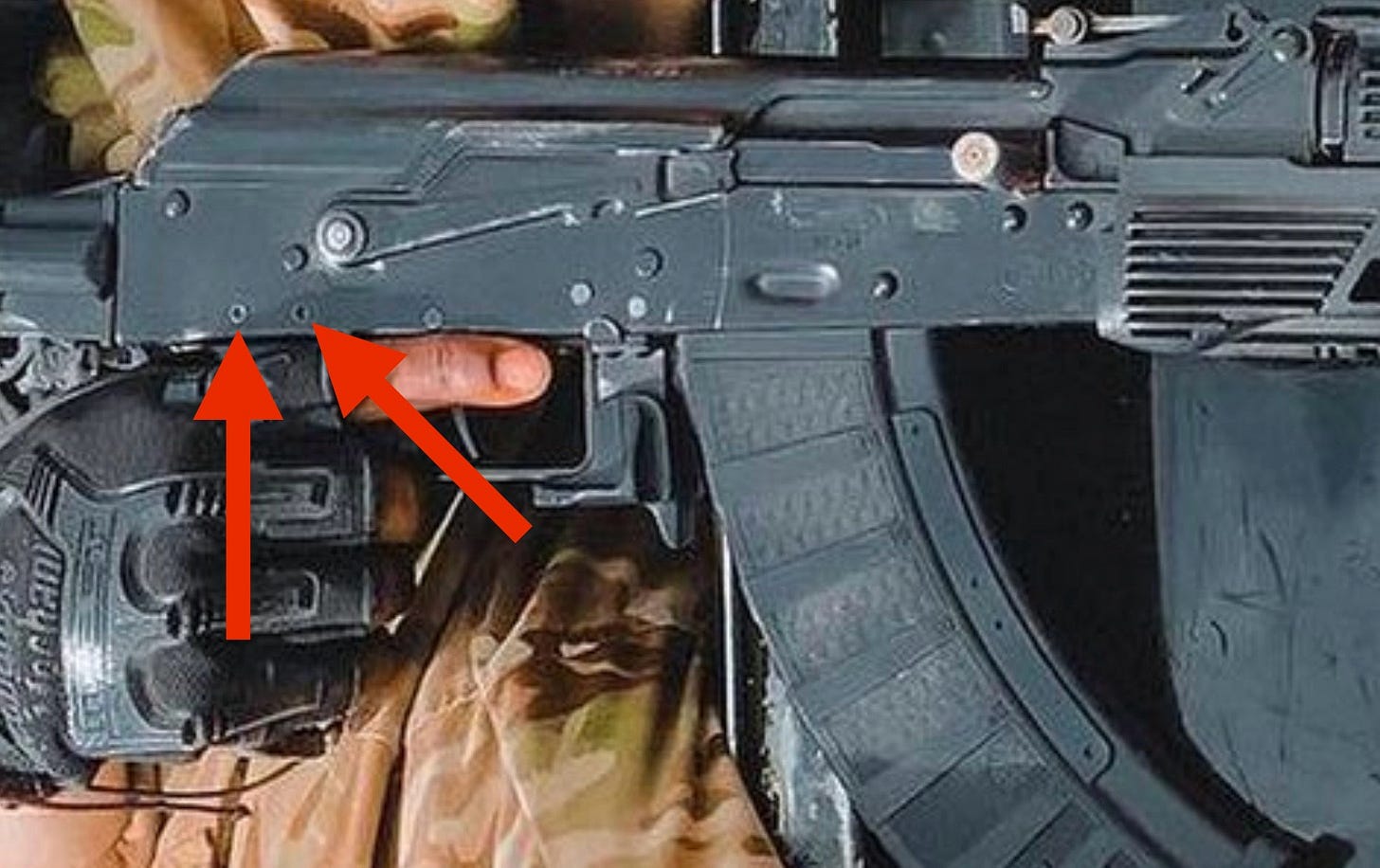


Origins of the C-AK-103

Following the annexation of the Ukrainian Crimean peninsula in early 2014 by the Russian Federation & the start of the Ukrainian civil war, president Barack Obama signed Executive Order 13660 in March of 2014. This presidential order heavily sanctioned the Russian Federation, and prohibited the importation of sporting small arms from several Russian arms manufacturers, one of those being Izhmash (also known as Kalashnikov Concern & now Kalashnikov Group). Unfortunately for the American firearms enthusiast, this executive order ended the importation of affordable Russian made Kalashnikov pattern sporting rifles & shotguns from legally entering the United States.
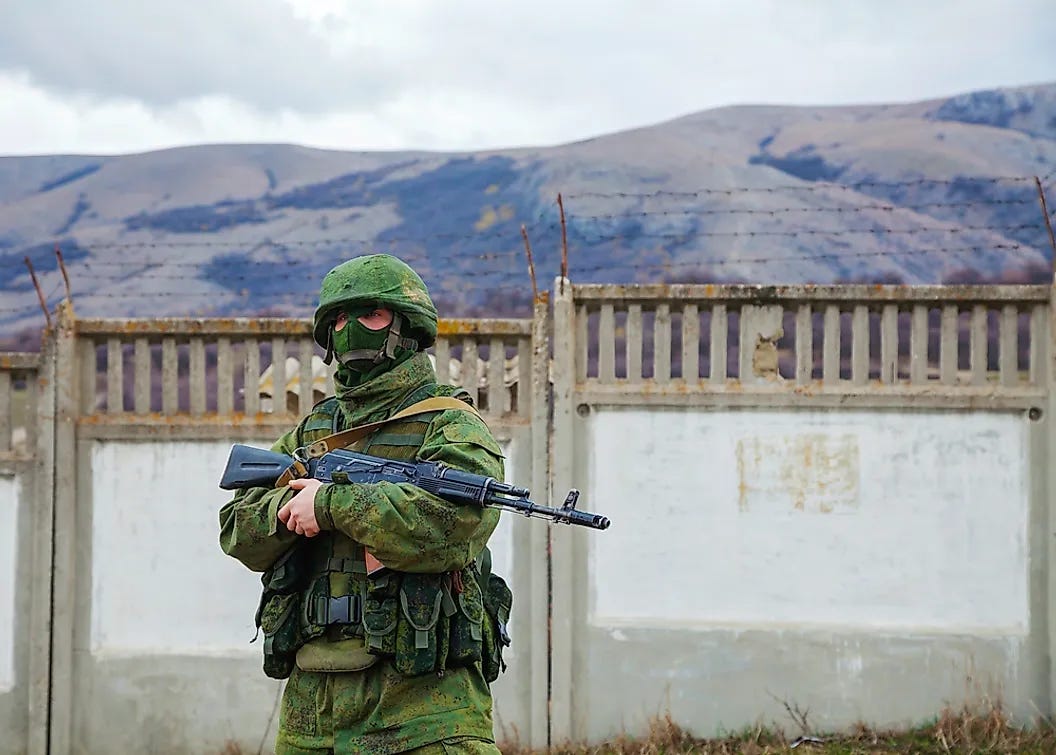
The Saiga (САЙГА in Russian) sporting rifles & shotguns imported into the United States prior to the invasion of Crimea came in several varieties & configurations. Most were imported in a true sporting configuration that featured a non-threaded front sight block, no accessory lug at all on the gas block, no handguard cap, special selector, no selector notches, rear sight with only a few positions, proprietary fire control group, sometimes a manual bolt hold open device, & sporting style plastic furniture. Other Saigas were able to be imported in a more “military style” configuration that featured the remnants of an accessory lug (wings ground off), a handguard cap, proper selector, at least one selector notch, lack of proprietary Saiga fire control group, & featured a conventional selector stop. Some American companies that imported Saiga rifles (such as Arsenal Inc), “militarized” (added folding stocks, proper barrel components, etc.) some Saiga rifles & shotguns after importation.
Before the sanctions, the United States was the biggest foreign market for the sporting style Saiga rifles, & several American importers imported these weapons into the United States. In the early 2010s, the importer RWC Group LLC was formed. RWC Group LLC would import Saiga sporting rifles into the United States up until the sanctions, as well as be involved with Izhmash & Kalashnikov Israel (A branch of CAA Industries) in several firearms related projects. RWC Group LLC is better known as Kalashnikov USA in 2023.
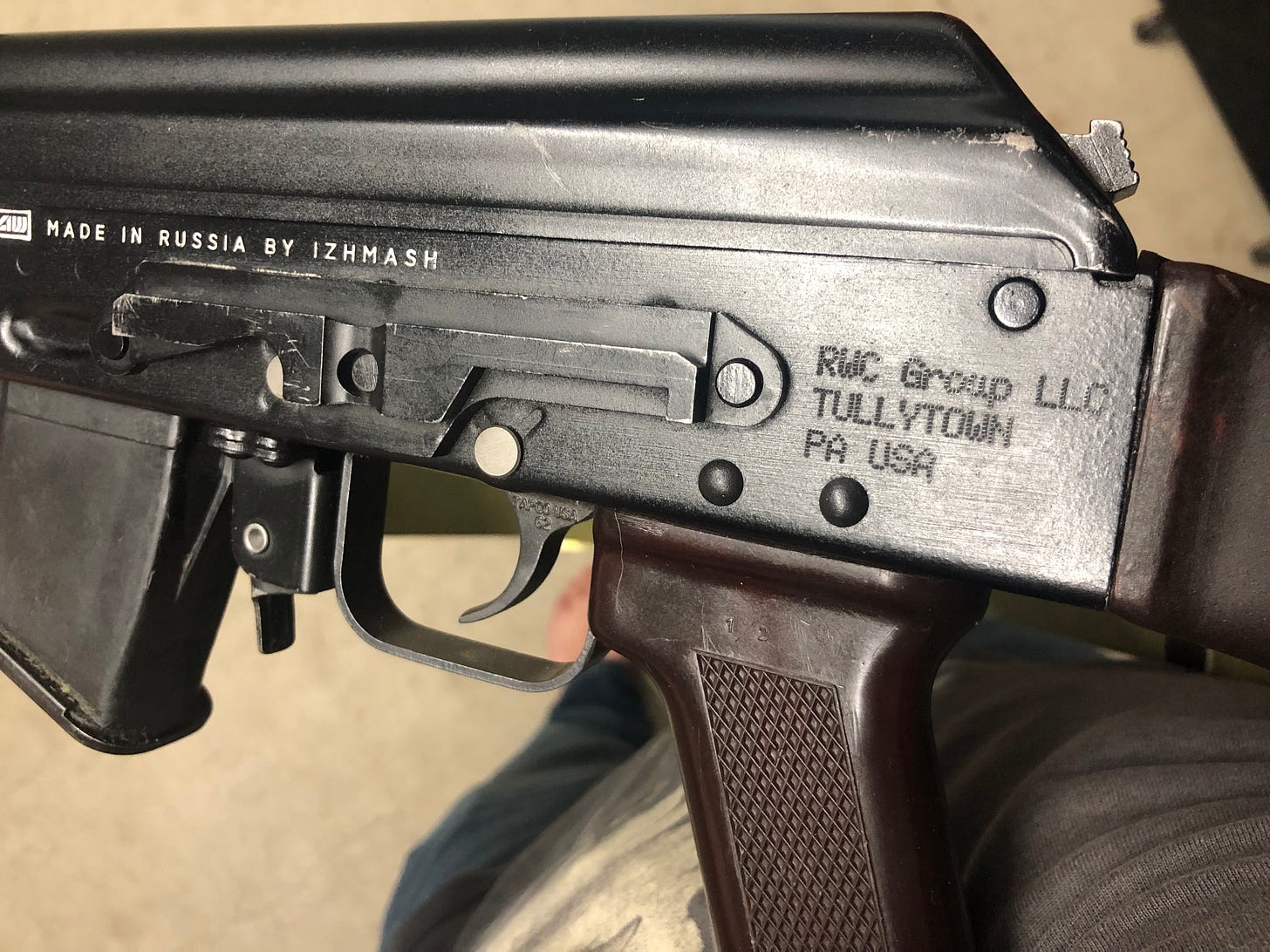
Following the loss of Kalashnikov Group’s biggest foreign civilian market (the United States), new buyers stepped in to acquire Saiga sporting rifles that were intended for the U.S. market. One of these buyers was the Israeli company CAA Industries.
In the mid to late 2010s (after 2014), two new Kalashnikov Concern affiliated companies would emerge onto the world stage. One of these companies is based in the United States, & the other is/was based in Israel. The American company RWC Group LLC would rebrand itself as Kalashnikov USA, & CAA Industries would create a new branch of their company known as Kalashnikov Israel. These two “Kalashnikov” companies would work on a joint project known as the “AK Alfa”, which would be first shown in the United States at the 2016 Shot Show.
Kalashnikov USA would eventually tool up to produce their own family of Kalashnikov style military & sporting firearms, whilst Kalashnikov Israel appears to have focused on the AK Alfa as well as likely being behind making what we now know as the C-AK-103.

C-AK-103 compared in detail to Saiga rifles

As stated previously, the C-AK-103 rifles are Russian made Saiga sporting rifles. Kalashnikov Israel was likely the company that modified these sporting rifles by converting them to select fire (can be seen by the three fire control group axis pins visible on C-AK-103 rifles, as well as the addition of a full auto selector notch), adding polymer furniture, adding & removing markings, & possibly adding a new front sight block that is threaded for a muzzle device. Some C-AK-103 rifles feature accesory lugs with “wings”(the mounting points) ground off, whilst others completely lack an accessory lug. Due to the handguard used on these rifles, & the lack of proper accesory lugs, the C-AK-103 assault rifles are not capable in their current state of accepting a GP-25/30/34 pattern 40mm underbarrel grenade launcher.


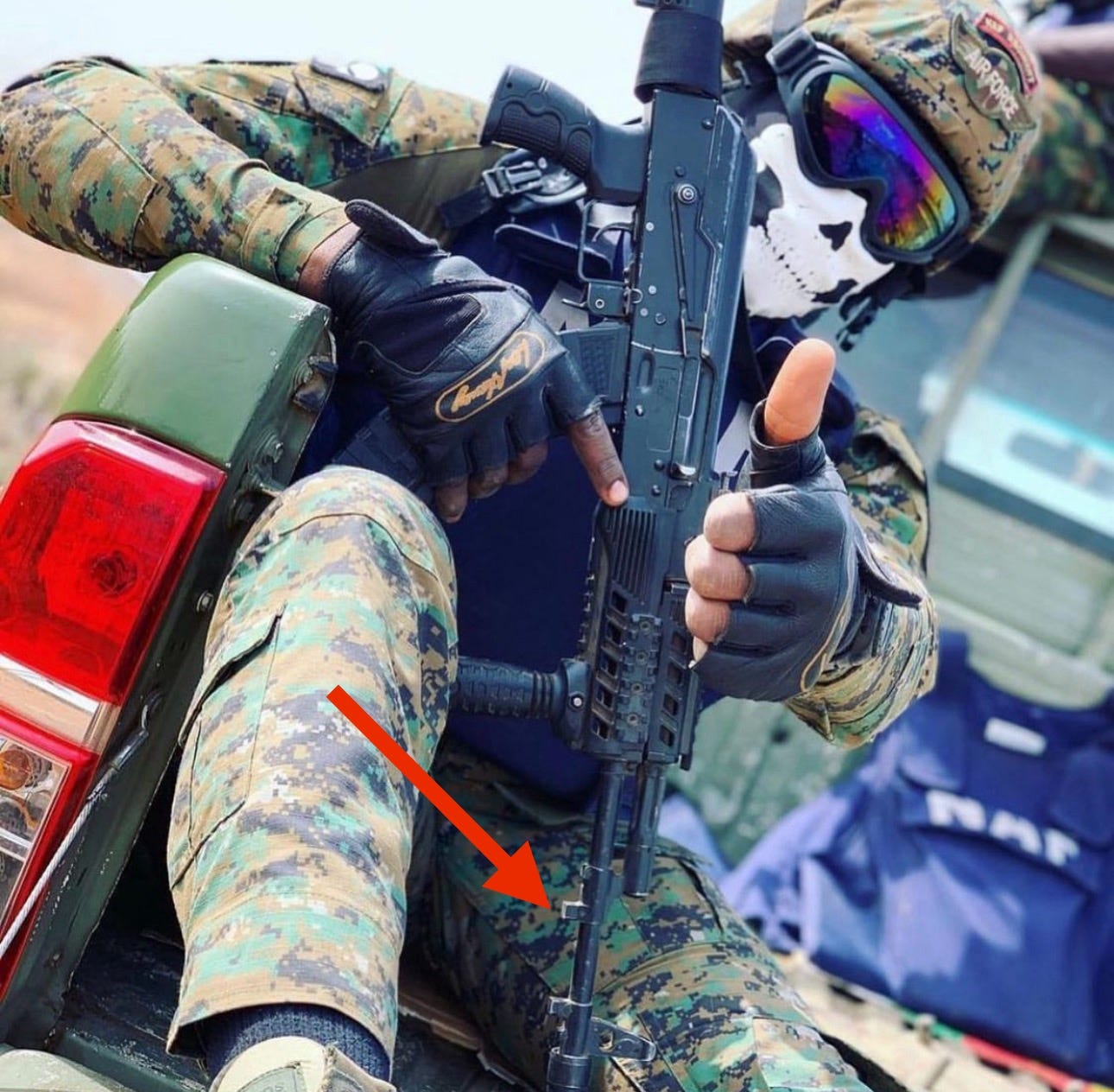

The remnants of a old sporting style Saiga fire control group can also be seen on most C-AK-103 assault rifles. This can be seen by pins or rivets located at the back of the receiver that are visible on both sides of the weapon. Some C-AK-103 rifles also do use Saiga style selectors. Saiga selectors will hang off the bottom of the rifles receiver when in the semi-auto position.
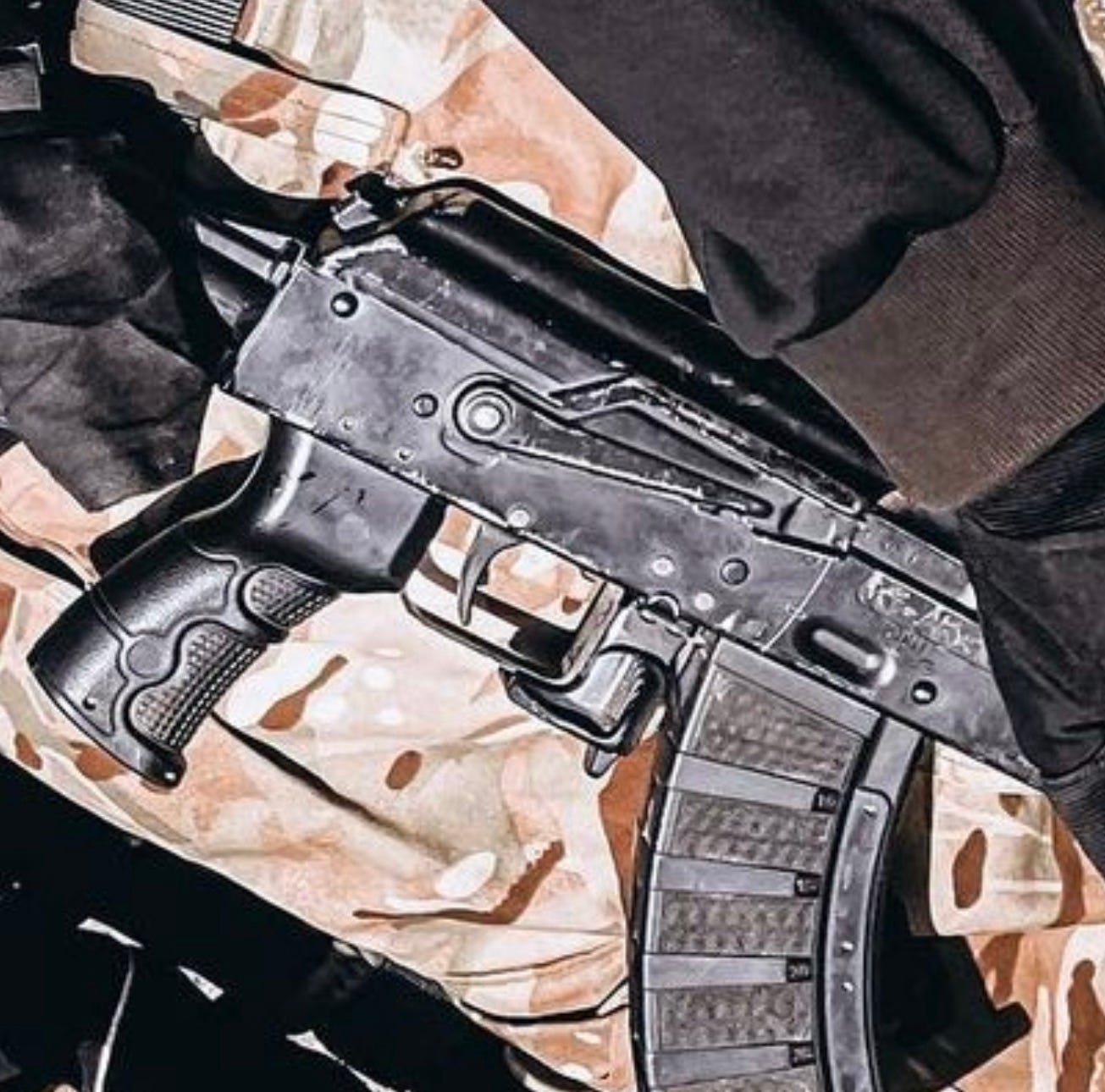
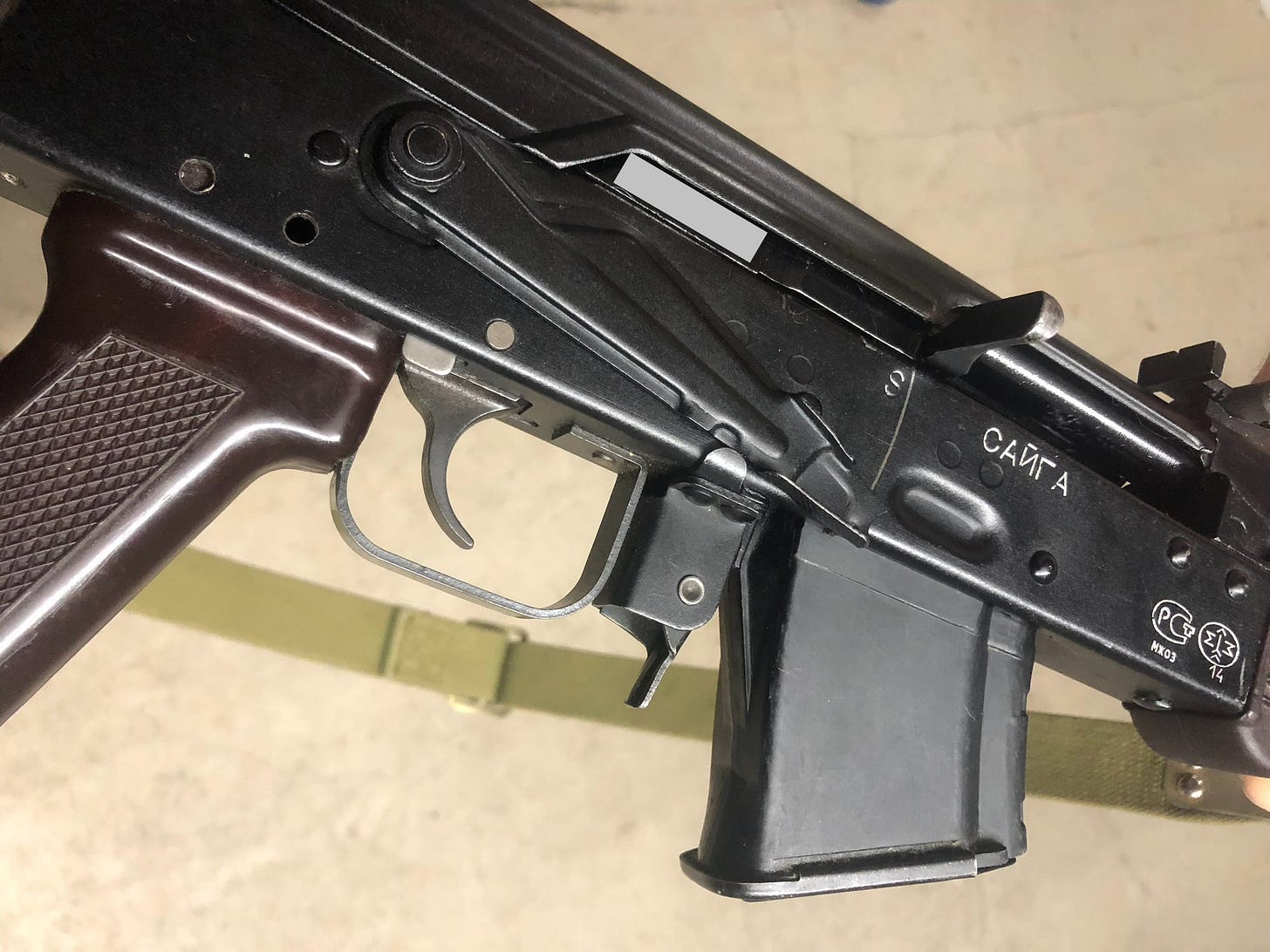
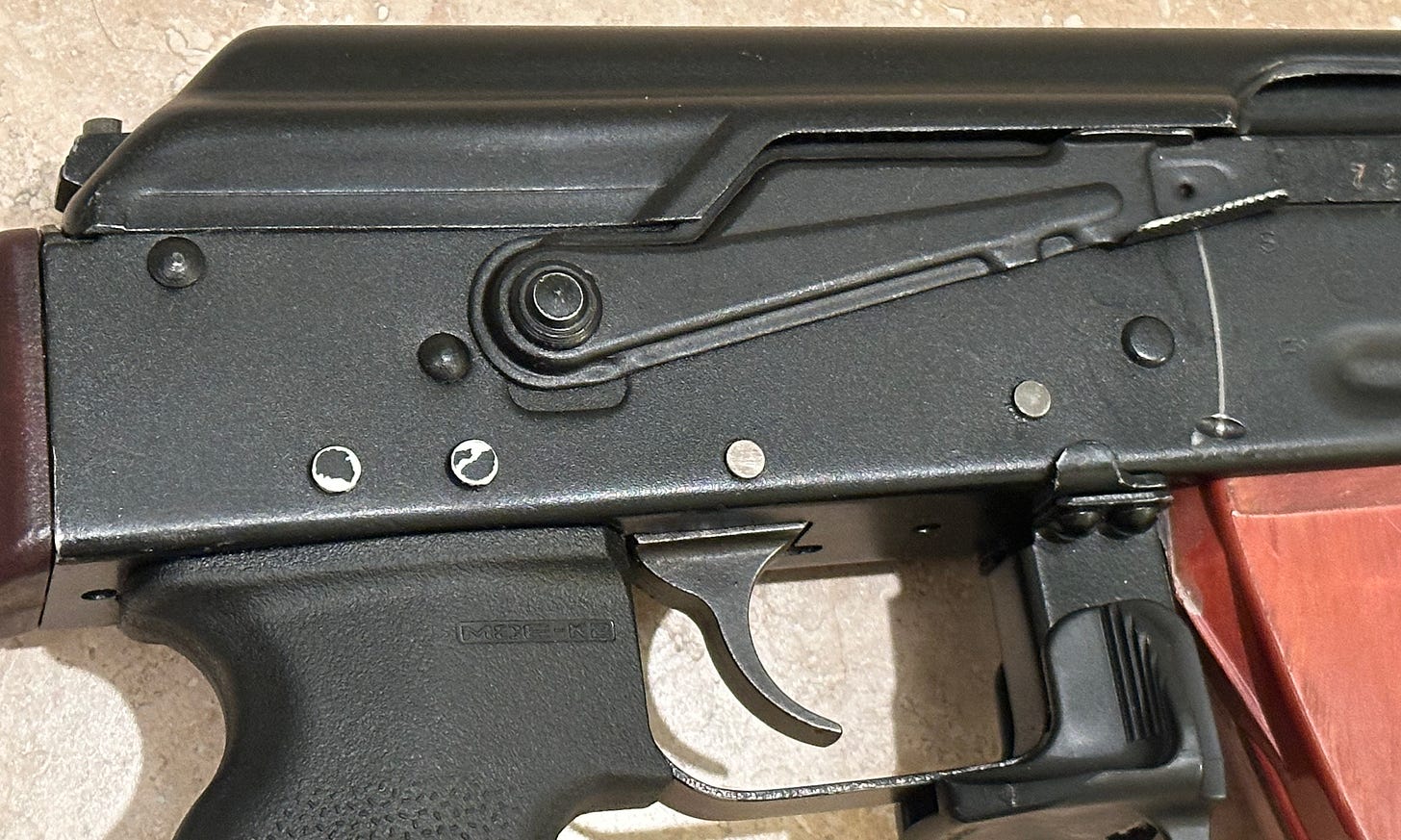
At least some of the C-AK-103 rifles also retain a hole in the bottom of the receiver where a manual bolt hold open was present. These were likely removed as some users find them uncomfortable & they add complexity to the weapon.
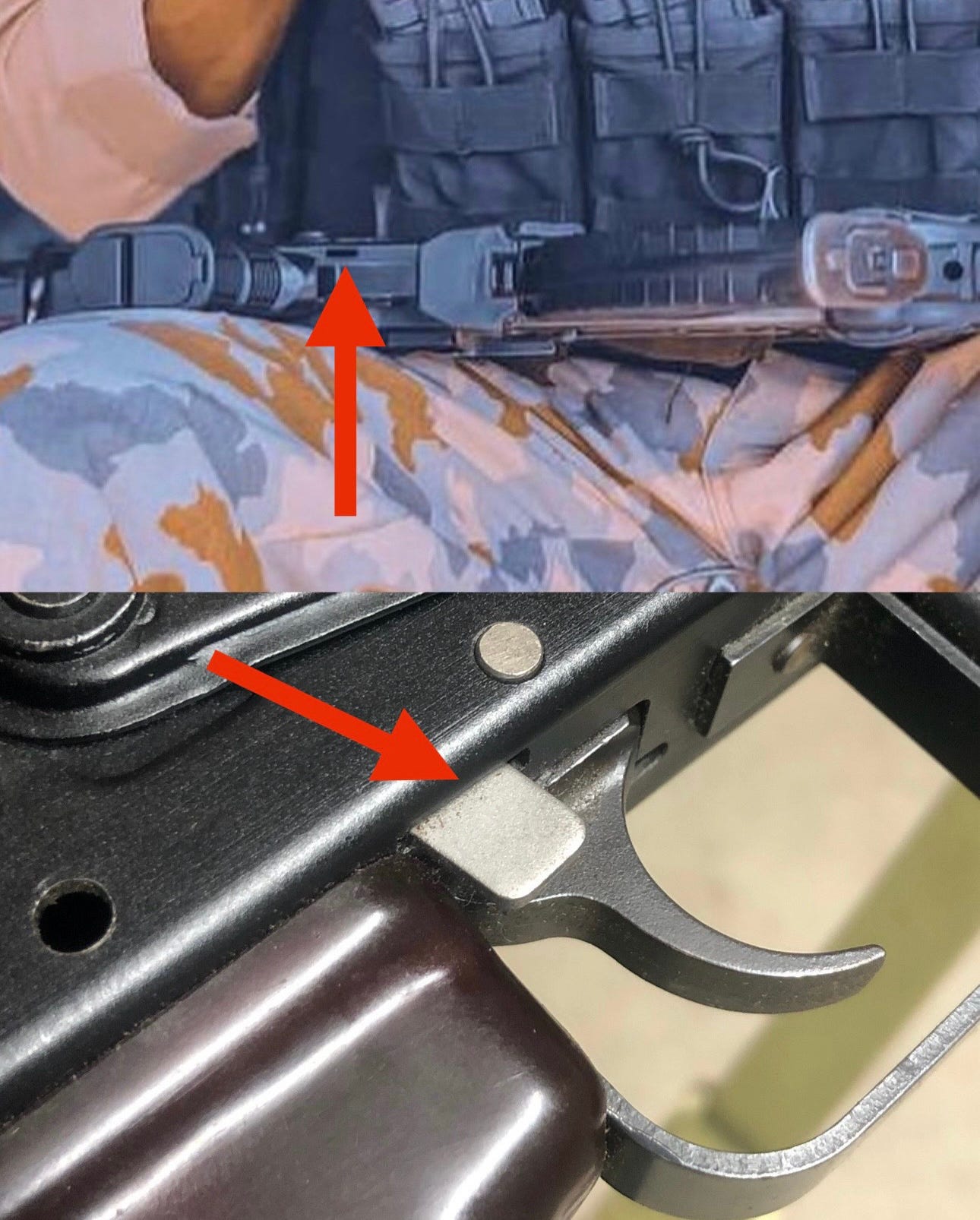
New selector markings do not appear to have been added to most if not all C-AK-103 assault rifles, but a full auto selector stop has been added to most if not all C-AK-103 assault rifles.
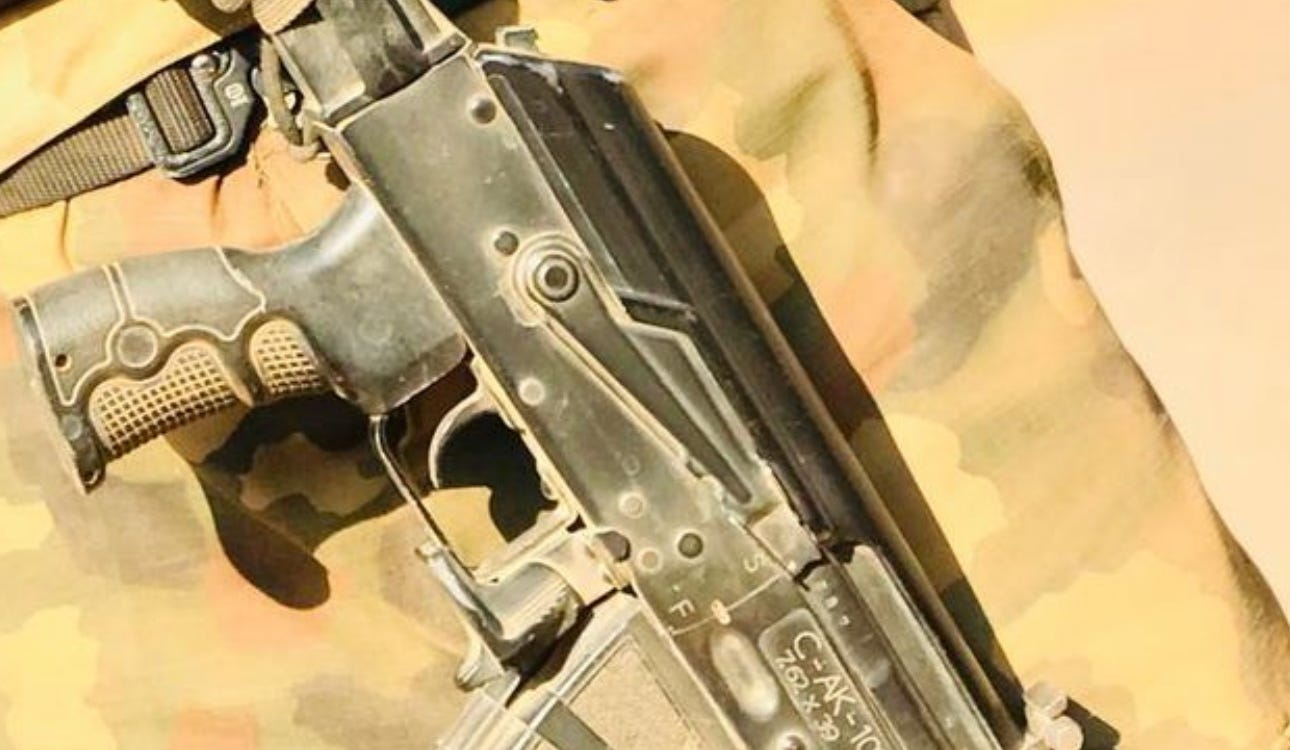
Like the Saiga sporting rifles that were imported into the United States, the C-AK-103 rifles vary. Some have features that others do not, such as accessory lugs or remnants of old fire control groups. One thing that all these C-AK-103 rifles do have in common is their chambering, the fact they were made originally in Russia, & their new “C-AK-103” designation written on the right side of the receiver.
Why did Nigeria adopt the C-AK-103? Well, one can speculate that these rifles were likely sold fairly cheaply in a decently large quantity. Saiga rifles back when they were imported into the United States were extremely affordable, often being sold for only a few hundred dollars. Kalashnikov Israel likely acquired a substantial amount of Saiga sporting rifles for pennies on the dollar, and probably didn’t have to invest much to turn them into “proper” modern assault rifles. Without a doubt, the C-AK-103 assault rifles were likely a cheaper option for the Nigerian Armed Forces when compared to purchasing legitimate brand new AK103 7.62x39mm assault rifles from Kalashnikov Concern/Group.
The AK Alfa in Nigeria
At this current time of writing this article, I have only seen one photograph of a Nigerian soldier armed with a very unique AK Alfa assault rifle. This image can be seen above (Fig 6-1).
Like previously stated, the AK Alfa was a joint project between Kalashnikov USA (RWC Group LLC) & Kalashnikov Israel (CAA Industries). Like the C-AK-103, the basis of the AK Alfa is a Saiga sporting rifle. Unlike the C-AK-103, the AK Alfa is a very heavily modified Saiga sporting rifle that features a wrap-around polymer chassis. The goal of the AK Alfa was to make more modern AK platform assault rifle that features improved ergonomics & accessory mounting options whilst retaining AK reliability.
The AK Alfa has never been successful, and could be considered a failure since its 2016 debut. Besides this one photograph (Fig 6-1), I have personally yet to see any other known military use of the AK Alfa. The AK Alfa seen in Fig 6-1 is likely select-fire, but it is impossible to say from this image. Some semi-auto only 5.56x45mm & 7.62x39mm AK Alfa rifles have been exported to European countries, such as Austria, for civilian use.
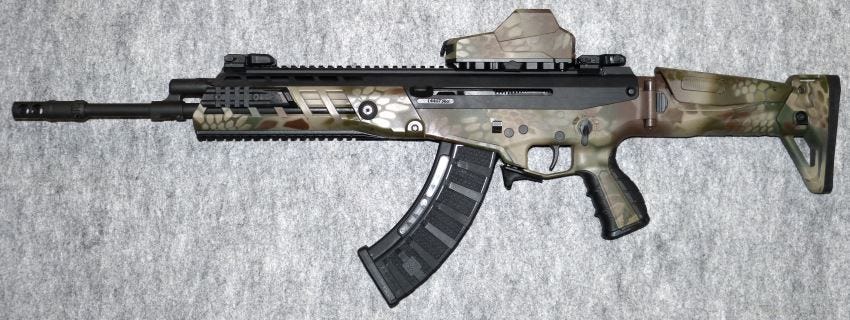
Conclusion
In my opinion, the presence of these converted Russian sporting rifles in Nigeria is very interesting, but also not that surprising. Again, the C-AK-103 rifles were likely acquired for less than what new production Russian AK103 assault rifles would cost, and to the Nigerian military the C-AK-103 looks more modern anyways due to the CAA Industries accessories installed on these rifles. I am not sure how many AK Alfa assault rifles made it into Nigeria, but frankly this single image is proof that at least one AK Alfa has been used by a conventional military.
Thank you for taking time to read this article, & I would also like to thank the people who subscribe to this blog.
Sources:
Websites
pewpewtactical.com
worldatlas.com
2009-2017.state.gov
Israeldefense.co.il
caa-tactical.com
modernfirearms.net
kalashnikovgroup.ru
YouTube
Vickers Tactical
Instagram
ak_house7.62
abbakar_affan

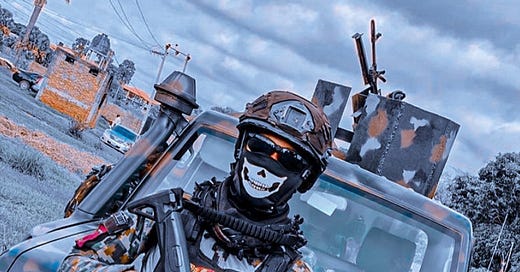



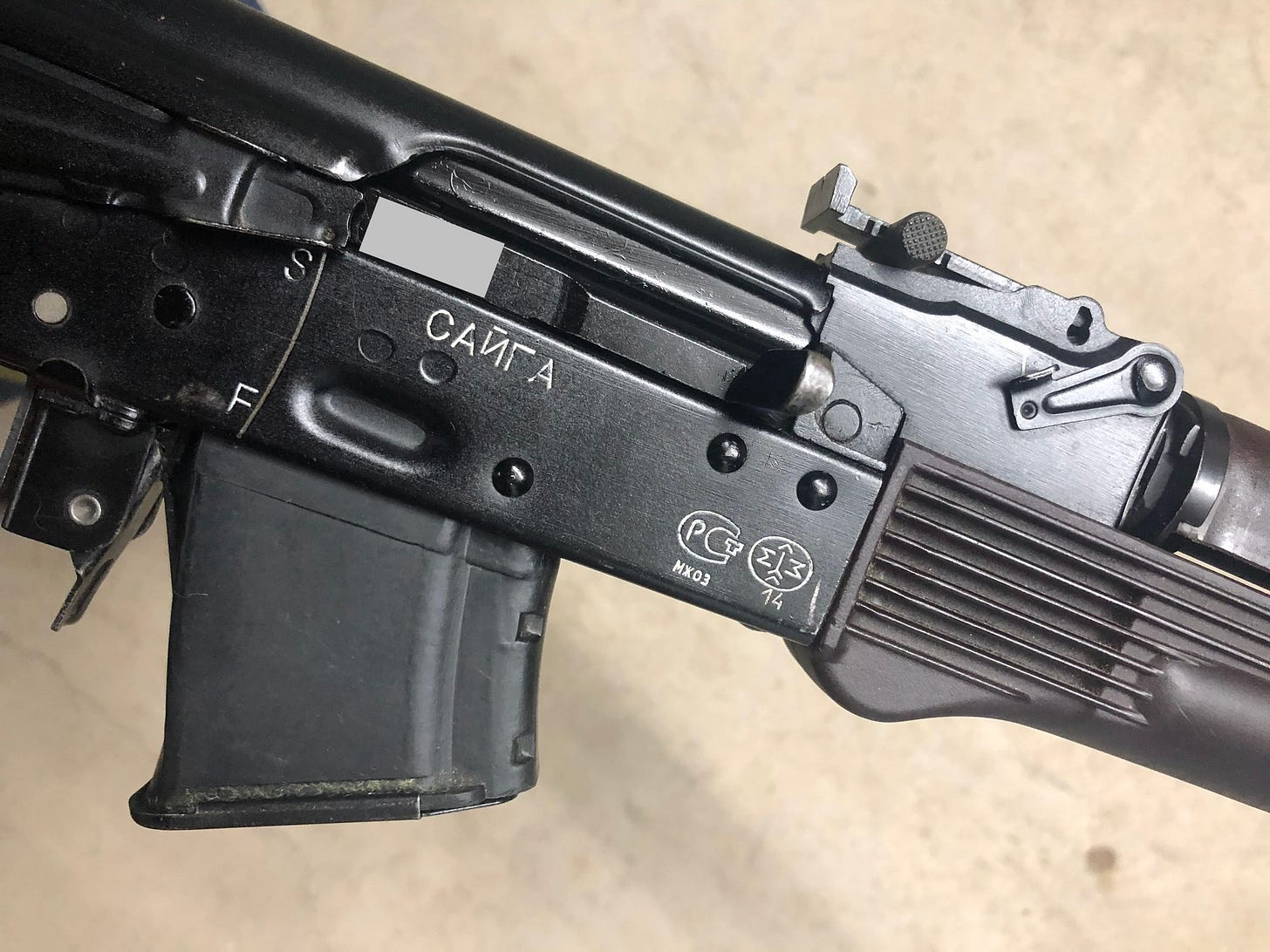

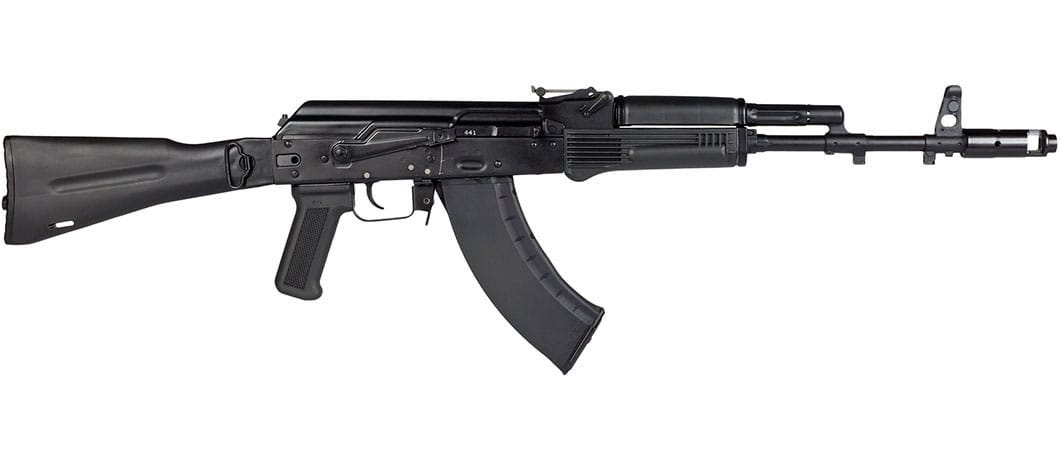

Thanks for the read. Interesting.